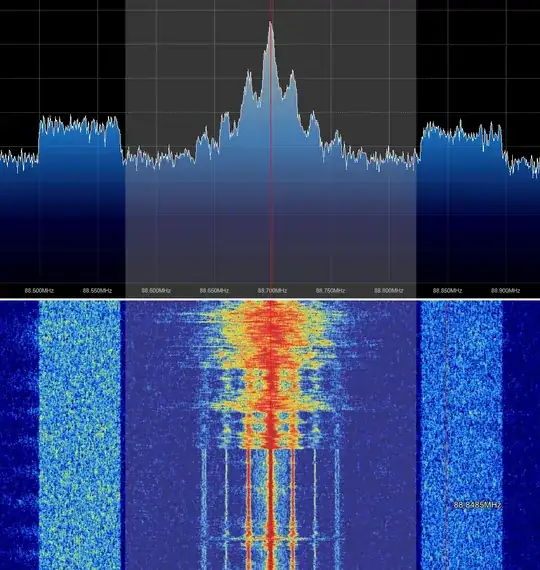I recently bought an inexpensive USB software-defined radio dongle, and have been poking around my local spectrum:

The above image is one of the local FM radio stations (88.7 Mhz, to be specific). I am wondering what the large, rectangular side-bands are. They don't seem to be involved in the actual radio content, as this is the only station that has them, and all the other stations seem to be received fine.
It's also not the stereo component of the signal, as again, stereo demodulation for other stations that lack these sidebands works without issue.
Each sideband is 125 Khz out from the center of the signal (i.e. the inner edges of the rectangular sidebands are 250 Khz apart).

